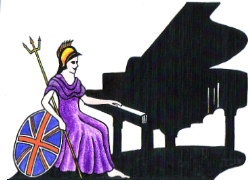Teachers, Accompanists and Piano Entertainers in the UK

UK Piano Page

9 Rothersthorpe Avenue
Rothersthorpe Ind. Estate
Northampton, Northamptonshire NN4 8JH
England
LSM Pianos Ltd. was established back in 1979. We
Beach's Crescent
Little London
Tadley, Hampshire RG26 5ER
England
We are a specialist piano company supplying pianos
Rickmansworth, Hertfordshire
England
Richard Lawson Pianos has been involved in the
Unit 17 Chaucer Industrial Park, Watery Lane
Sevenoaks
Kemsing, Kent TN15 6PJ
England
Rookery Farm
Radstock, Somerset BA3 4UL
England
Abbey Piano Services is run by a small team of
Music Festival for performers and guests Our 10th
18-06-2022 01:30PM
The Morecambe Bay Piano Group was set up to extend
11-12-2021 02:00PM
The Morecambe Bay Piano Group was set up to extend
08-01-2022 02:00PM
The Morecambe Bay Piano Group was set up to extend
12-02-2022 02:00PM